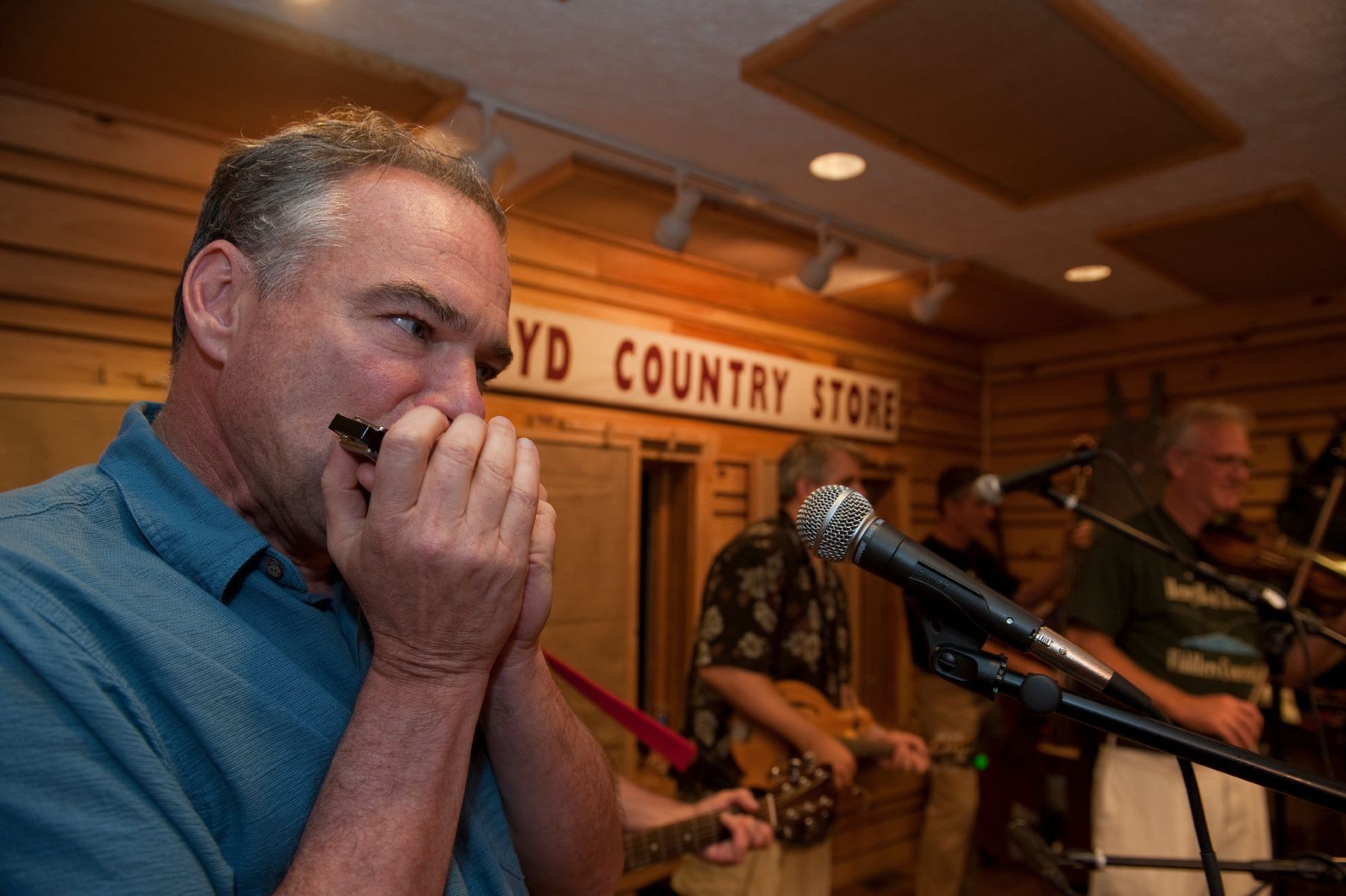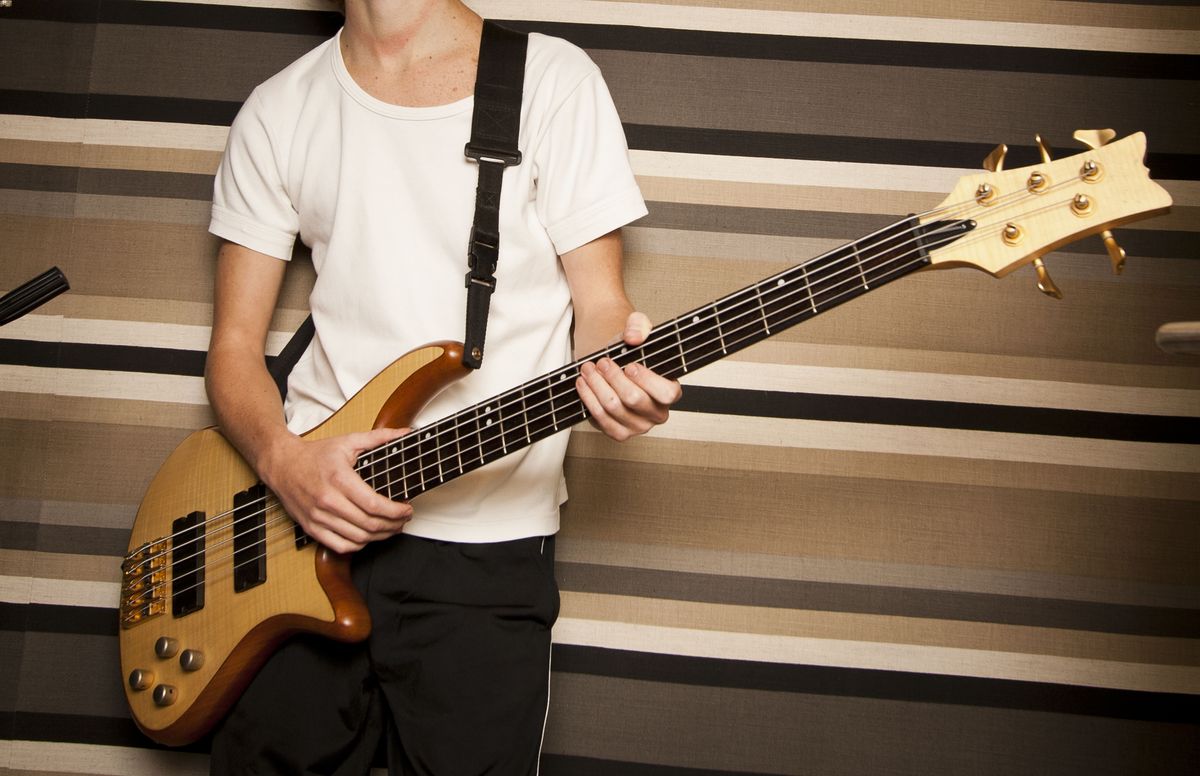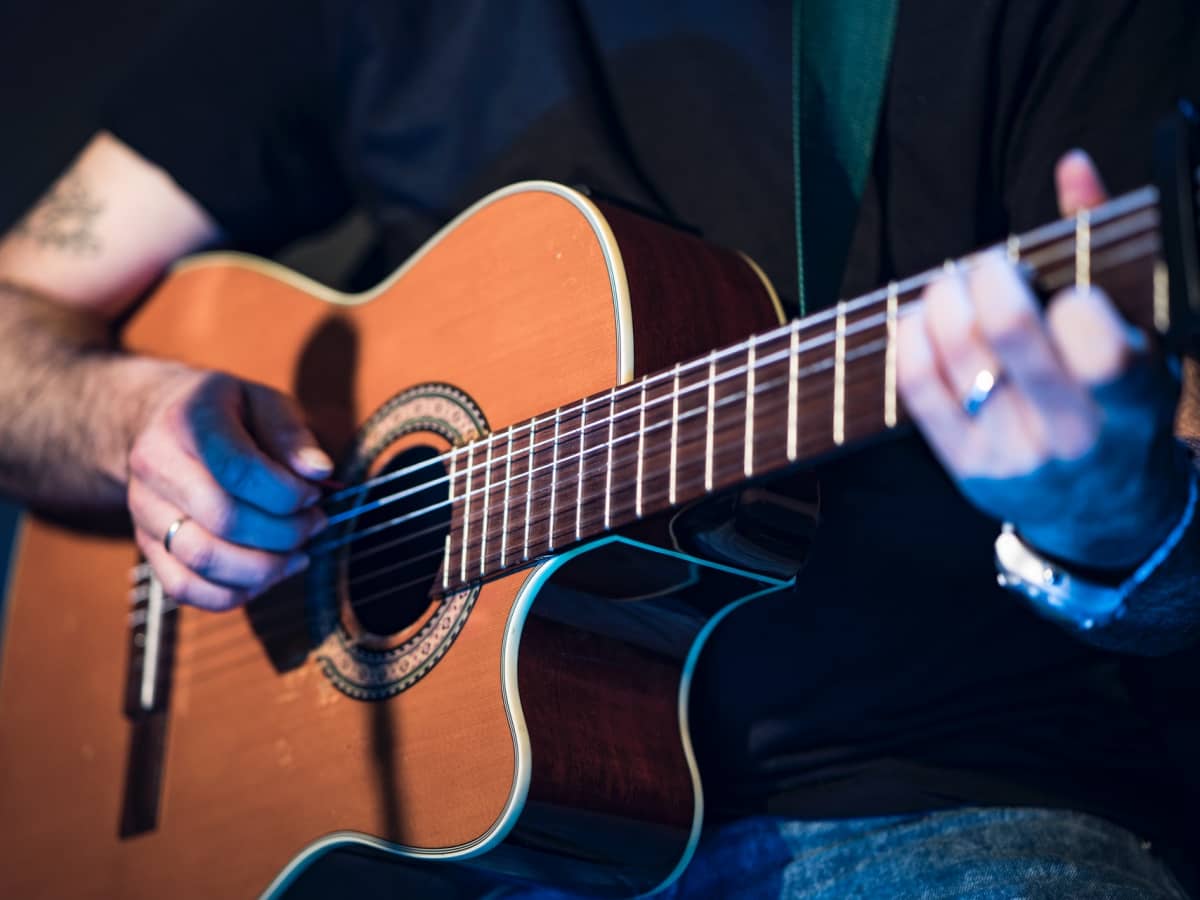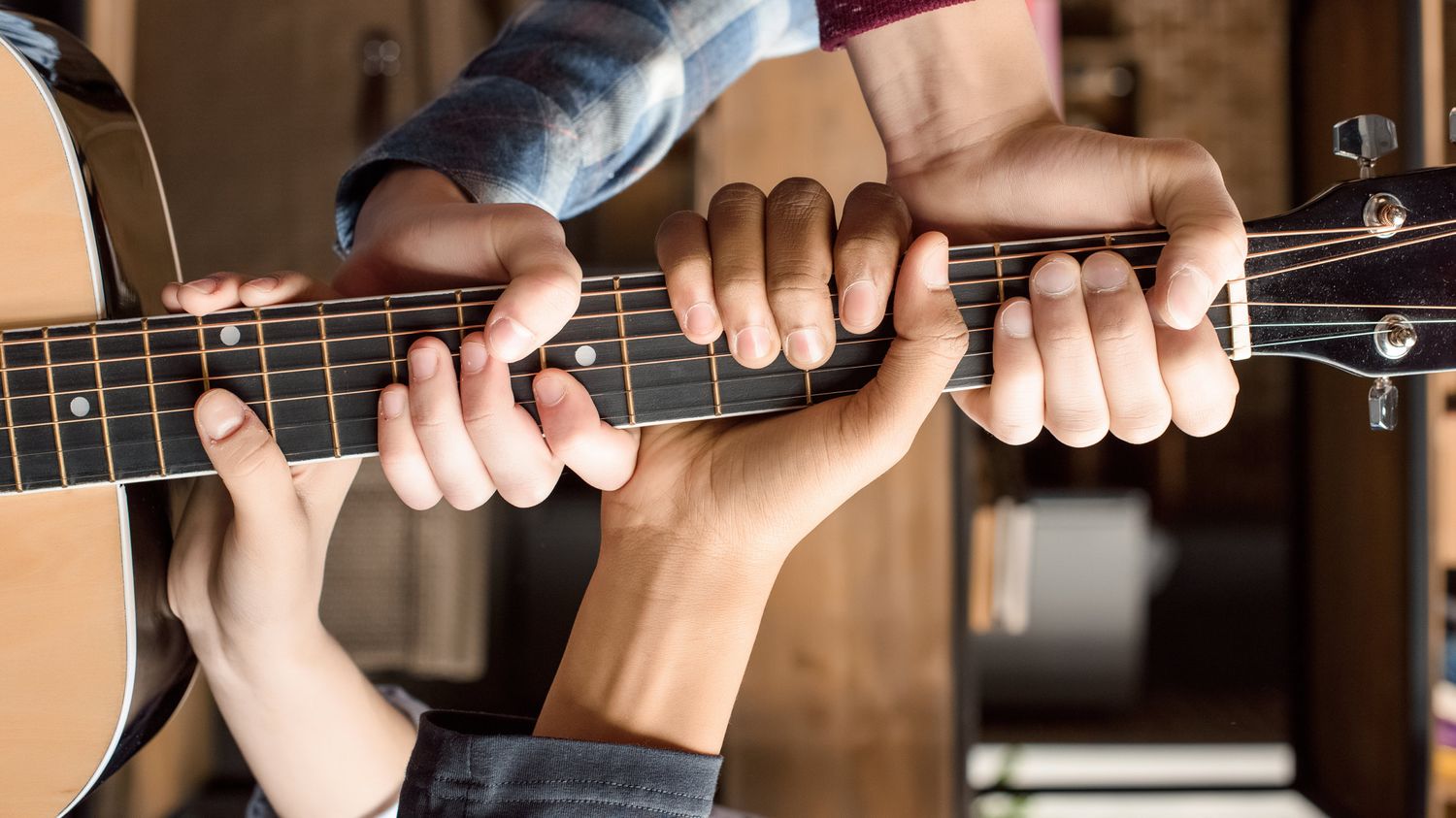Home>Instruments>Guitar>Learn How To Play A Bass Guitar


Guitar
Learn How To Play A Bass Guitar
Published: February 15, 2024
Learn how to play a bass guitar with our comprehensive guitar lessons. Master the techniques and become a skilled guitarist with our expert guidance. Start your musical journey today!
(Many of the links in this article redirect to a specific reviewed product. Your purchase of these products through affiliate links helps to generate commission for AudioLover.com, at no extra cost. Learn more)
Table of Contents
Introduction
So, you’ve decided to learn how to play the bass guitar. Congratulations! You’re about to embark on a musical journey that will not only enrich your life but also contribute to the rhythm and groove of countless songs. The bass guitar is the heartbeat of a band, providing the essential low-end foundation that drives the music forward. Whether you’re drawn to the funky basslines of disco, the driving force of rock and metal, or the melodic complexity of jazz, the bass guitar offers a world of possibilities for aspiring musicians.
Learning to play the bass guitar is a rewarding experience that requires dedication, patience, and a genuine passion for music. As you delve into the realm of bass playing, you’ll discover the instrument’s unique role in shaping the overall sound of a song. From laying down solid rhythmic patterns to adding melodic flourishes, the bass guitar is a versatile instrument that holds immense power within a band’s sonic landscape.
This comprehensive guide is designed to take you from a beginner to a proficient bass player. We’ll cover everything from choosing the right bass guitar and understanding its basics to learning essential techniques and playing your first song. By the end of this journey, you’ll be well-equipped to continue honing your skills and exploring the endless creative possibilities that the bass guitar has to offer.
Choosing the Right Bass Guitar
When embarking on your bass guitar journey, selecting the right instrument is crucial. With a wide array of bass guitars available in various shapes, sizes, and configurations, it’s essential to consider several factors to ensure that you find the perfect match for your playing style and musical preferences.
First and foremost, you’ll need to decide on the type of bass guitar that best suits your needs. The two primary types are the traditional electric bass guitar and the acoustic bass guitar. Electric bass guitars are the most common choice for beginners, offering a versatile sound that can be amplified for live performances or practice sessions. On the other hand, acoustic bass guitars produce a more organic sound without the need for amplification, making them well-suited for intimate acoustic settings.
Next, consider the number of strings on the bass guitar. While the standard configuration features four strings, known as the 4-string bass, you may also encounter 5-string and 6-string bass guitars. The additional strings provide extended range and lower notes, catering to genres that demand deeper tonal options, such as metal and progressive rock.
Another crucial aspect to ponder is the body style of the bass guitar. Common variations include the precision bass and jazz bass designs, each offering distinct tonal characteristics and ergonomic features. Additionally, exploring different neck profiles and fretboard materials can significantly impact the playability and comfort of the instrument.
As you begin your search for the perfect bass guitar, it’s advisable to visit music stores and try out various models to gauge their sound, feel, and overall appeal. Keep in mind that the right bass guitar should inspire you to pick it up and play, resonating with your musical aspirations and motivating you to explore its sonic capabilities.
Understanding the Basics of a Bass Guitar
Before diving into playing the bass guitar, it’s essential to grasp the fundamental components and characteristics of this captivating instrument. The bass guitar, often referred to simply as the bass, shares similarities with the standard electric guitar but serves a distinct purpose within a musical ensemble.
At its core, the bass guitar is responsible for providing the rhythmic foundation and harmonic structure of a song. Unlike the higher-pitched melodies of lead guitars, the bass guitar generates deep, resonant tones that underpin the music, creating a sense of movement and cohesion. Typically featuring four strings, tuned to E-A-D-G from low to high, the bass guitar’s extended scale length and thicker strings contribute to its rich, low-frequency sound.
One of the key elements of the bass guitar is the use of basslines, which are repetitive rhythmic patterns that define the song’s groove and support the harmonic progression. These basslines can range from simple, driving rhythms to intricate melodic phrases, showcasing the instrument’s versatility and expressive potential.
Understanding the role of rhythm is paramount for bass players, as they collaborate with the drummer to establish a solid rhythmic framework for the band. By locking in with the drummer’s kick drum and snare patterns, the bass guitar forms the rhythmic backbone of the music, guiding the other instrumentalists and shaping the overall feel of the song.
Another crucial aspect of the bass guitar is its interaction with harmony. Through the use of root notes, chord tones, and arpeggios, bass players contribute to the harmonic structure of the music, adding depth and complexity to the sound. By navigating the song’s chord progressions and embellishing the harmonic framework, bassists play a vital role in shaping the tonal palette of the band’s music.
As you embark on your bass guitar journey, recognizing the instrument’s foundational role in rhythm and harmony will provide a solid framework for developing your skills and musical expression. Embracing the unique characteristics and responsibilities of the bass guitar will empower you to become an integral part of any musical ensemble, driving the music forward with confidence and creativity.
Tuning Your Bass Guitar
Ensuring that your bass guitar is properly tuned is a fundamental aspect of preparing to play. Proper tuning not only ensures that your instrument produces the correct pitches but also contributes to the overall sound and harmony of the music. The standard tuning for a 4-string bass guitar is E-A-D-G, starting from the lowest-pitched string to the highest. Here’s a step-by-step guide to tuning your bass guitar:
- Use a Tuner: A digital tuner is an essential tool for accurately tuning your bass guitar. Clip-on tuners or pedal tuners are popular choices and provide visual feedback to help you achieve precise tuning.
- Tune the E String: Start by tuning the lowest-pitched string, E, to the correct pitch using the tuner as a reference. Turn the tuning peg until the tuner indicates that the string is tuned to E.
- Proceed to the A String: Once the E string is tuned, move on to the A string and adjust its tension until it matches the A pitch on the tuner.
- Tune the D String: Next, tune the D string to the appropriate pitch, ensuring that it resonates at the correct frequency as indicated by the tuner.
- Complete with the G String: Finally, tune the highest-pitched string, G, to its designated pitch, aligning it with the tuner’s display to achieve accurate tuning.
After tuning all four strings, it’s advisable to double-check the tuning to ensure that each string maintains its proper pitch. Additionally, it’s important to develop a good ear for pitch and train yourself to recognize when the bass guitar is in tune by listening for the correct intervals between the strings.
Regular tuning maintenance is essential to keep your bass guitar sounding its best. Factors such as changes in temperature, humidity, and string tension can affect the instrument’s tuning, so it’s recommended to tune your bass guitar before each practice session or performance to maintain optimal sound quality and playability.
By mastering the art of tuning your bass guitar, you’ll lay the groundwork for producing harmonious, well-balanced tones and set the stage for a rewarding and enjoyable playing experience.
Holding and Playing Your Bass Guitar
Proper technique and posture are essential for playing the bass guitar comfortably and effectively. Whether you’re standing or sitting, adopting the correct position and hand placement will contribute to your overall playing experience and help prevent fatigue and strain. Here’s a guide to holding and playing your bass guitar with ease and finesse:
- Standing Position: When standing, the bass guitar should be positioned comfortably against your body, with the lower bout of the instrument resting on your right thigh (for right-handed players) or left thigh (for left-handed players). The neck of the bass should be angled slightly upward, allowing your fretting hand to move freely along the fingerboard.
- Strap Adjustment: Adjust the strap to a length that allows the bass guitar to hang at a comfortable height, balancing accessibility to the fretboard and ease of reaching the strings. The goal is to maintain a relaxed and natural playing posture without straining your shoulders or back.
- Sitting Position: If you prefer to sit while playing, use a suitable chair without armrests to allow unrestricted movement. Rest the bass guitar on your dominant leg, ensuring that it remains stable and well-supported while you play.
- Hand Placement: Position your fretting hand (left hand for right-handed players, right hand for left-handed players) behind the neck of the bass guitar, using your thumb as a supportive anchor while allowing your fingers to reach the strings comfortably. Your plucking hand (right hand for right-handed players, left hand for left-handed players) should hover over the strings, ready to execute precise and controlled plucking or picking motions.
As you begin to play, focus on maintaining a relaxed and natural posture, allowing your arms and hands to move fluidly without unnecessary tension. Practice transitioning between different fretting positions and string plucking techniques to familiarize yourself with the instrument’s ergonomics and develop dexterity and control.
Furthermore, pay attention to the positioning of your fingers on the fretboard and the execution of plucking or picking techniques to produce clear and articulate notes. Consistent practice and mindful attention to your playing posture and technique will contribute to your overall comfort and proficiency as a bass guitarist.
By establishing a solid foundation for holding and playing your bass guitar, you’ll set the stage for a fulfilling and enjoyable musical journey, laying the groundwork for developing your unique playing style and musical expression.
Learning Basic Bass Guitar Techniques
Mastering fundamental bass guitar techniques is essential for building a strong musical foundation and unlocking your creative potential as a bassist. By familiarizing yourself with essential techniques, you’ll be equipped to navigate various musical styles and effectively contribute to the rhythmic and harmonic elements of a song. Here are some fundamental techniques to focus on as you begin your bass guitar journey:
- Fingerstyle Technique: The fingerstyle technique, often referred to as fingerpicking, involves plucking the strings with your fingertips or fingernails. This technique offers precision and dynamic control, allowing you to produce nuanced and expressive tones. Practice alternating between different fingers to develop dexterity and consistency in your plucking motion.
- Thumb Technique: Utilizing your thumb to pluck the strings is a common technique that provides a warm and resonant tone. Experiment with using your thumb to play root notes and establish a solid rhythmic foundation, especially in genres that emphasize groove and rhythm, such as funk and blues.
- Slap and Pop: The slap and pop technique is synonymous with funk and contemporary styles, adding percussive and vibrant elements to the bassline. Mastering this technique involves using your thumb to slap the strings against the fretboard and then popping the strings with your other fingers to create a distinctive and rhythmic sound.
- Hammer-Ons and Pull-Offs: Incorporating hammer-ons and pull-offs into your playing introduces fluidity and articulation to your basslines. Practice fretting a note and then using your fretting hand to create a seamless transition to a higher or lower note without re-plucking the string, adding depth and expressiveness to your playing.
- Root Note Emphasis: Emphasizing the root notes of chords and progressions is a fundamental aspect of bass playing. By anchoring the song’s harmonic structure with well-defined root notes, you establish a solid foundation for the band’s overall sound, providing clarity and direction to the music.
As you delve into these techniques, focus on precision, timing, and consistency to refine your playing and develop a strong rhythmic sensibility. Experiment with different playing styles and techniques to expand your musical repertoire and cultivate a versatile approach to bass guitar playing.
By dedicating time to mastering these basic bass guitar techniques, you’ll lay the groundwork for becoming a well-rounded and expressive bassist, equipped to tackle a diverse range of musical genres and contribute meaningfully to any musical ensemble.
Playing Your First Bass Guitar Song
Embarking on the journey of learning your first bass guitar song is an exciting and pivotal moment in your musical development. As you apply the foundational techniques and principles you’ve acquired, you’ll gain a sense of accomplishment and confidence in your ability to contribute to a musical piece. Here’s a step-by-step guide to help you navigate the process of playing your first bass guitar song:
- Song Selection: Choose a song that resonates with you and aligns with your current skill level. Opt for a piece with a straightforward bassline that allows you to focus on mastering essential techniques while enjoying the process of learning and playing.
- Listen and Analyze: Listen to the song attentively, paying close attention to the bassline. Identify the rhythmic patterns, note transitions, and any variations in the bass part. This step will provide insight into the song’s structure and help you internalize the bassline’s nuances.
- Break It Down: Break the bassline into manageable segments, focusing on mastering each section before progressing to the next. Pay attention to note durations, articulation, and dynamics, aiming for precision and clarity in your playing.
- Practice with the Band: If possible, practice playing the song alongside a backing track or with other musicians. This simulates the experience of performing within a band context, allowing you to lock in with the rhythm and develop a cohesive musical connection with the other instruments.
- Refine Your Technique: As you work through the song, concentrate on refining the techniques you’ve learned, such as fingerstyle, plucking, and fretting. Pay attention to your posture, hand placement, and overall comfort while playing, ensuring that you maintain a relaxed and controlled approach.
Approach the process of learning your first bass guitar song with patience and persistence, embracing the challenges and celebrating your progress along the way. As you become more familiar with the song and its intricacies, you’ll develop a deeper understanding of how the bass guitar contributes to the overall musical arrangement.
Playing your first bass guitar song marks a significant milestone in your musical journey, signifying your growth as a bassist and your ability to translate foundational techniques into a tangible musical expression. Embrace the experience with enthusiasm and determination, knowing that each note you play brings you closer to realizing your musical aspirations.
Improving Your Bass Guitar Skills
Continuously enhancing your bass guitar skills is a fulfilling and ongoing endeavor that allows you to expand your musical horizons and evolve as a musician. As you progress on your bass guitar journey, dedicating time to deliberate practice, exploration, and musical discovery will contribute to your growth and proficiency. Here are valuable strategies to help you improve your bass guitar skills:
- Structured Practice Routine: Establish a structured practice regimen that encompasses technical exercises, scales, and repertoire building. Devote time to honing fundamental techniques, such as fingerstyle, plucking, and fretting, while also exploring new playing styles and genres to broaden your musical vocabulary.
- Ear Training: Develop your ear by actively listening to various basslines and musical compositions. Train yourself to recognize intervals, chord progressions, and rhythmic patterns, enabling you to internalize musical concepts and apply them intuitively in your playing.
- Study Music Theory: Delve into music theory concepts relevant to the bass guitar, including scales, modes, chord construction, and rhythmic notation. Understanding the theoretical underpinnings of music will empower you to make informed musical decisions and communicate effectively with other musicians.
- Collaborate with Musicians: Engage in collaborative musical experiences by playing with other instrumentalists, jamming with fellow musicians, or joining a band. Collaborative settings provide opportunities to refine your ensemble playing, adapt to different musical styles, and develop a cohesive musical rapport with other performers.
- Explore Diverse Genres: Broaden your musical palette by exploring diverse genres and styles, ranging from rock and funk to jazz and Latin music. Each genre offers unique rhythmic and harmonic characteristics that can enrich your playing and inspire creative interpretations.
Additionally, seek inspiration from accomplished bassists and study their playing techniques, musical phrasing, and innovative approaches to the instrument. Analyzing and emulating the styles of renowned bassists can offer valuable insights and ignite your creativity as you strive to refine your own playing.
Remember that the journey of improving your bass guitar skills is a continuous and rewarding pursuit. Embrace each practice session and musical exploration with enthusiasm and an open mind, knowing that every step forward brings you closer to realizing your full potential as a bass guitarist.
Conclusion
Congratulations on completing this comprehensive guide to learning and mastering the bass guitar. As you reflect on the knowledge and techniques you’ve acquired, you’re poised to embark on a fulfilling musical journey filled with creativity, expression, and rhythmic exploration. The bass guitar, with its foundational role in shaping the sonic landscape of music, offers endless possibilities for artistic growth and self-expression.
By choosing the right bass guitar that resonates with your musical aspirations, understanding its fundamental principles, and mastering essential techniques, you’ve laid a solid foundation for your musical endeavors. Whether you’re drawn to the infectious grooves of funk, the driving force of rock, or the melodic complexities of jazz, the skills and insights you’ve gained will serve as valuable assets as you navigate diverse genres and musical styles.
As you continue your bass guitar journey, remember to approach each practice session and musical exploration with dedication, curiosity, and a willingness to embrace new challenges. Cultivate a passion for continuous improvement, collaborate with fellow musicians, and seek inspiration from the rich tapestry of musical influences around you.
Above all, cherish the joy of creating music and the profound impact that your bass guitar playing can have on the emotional and rhythmic tapestry of a song. Whether you’re performing on stage, jamming with friends, or crafting your own compositions, your role as a bassist holds the power to elevate the music and move audiences with captivating rhythms and melodic expressions.
As you progress on your bass guitar journey, remember that each note you play contributes to the vibrant and ever-evolving story of your musical growth. Embrace the journey with enthusiasm, perseverance, and a deep appreciation for the transformative power of music. Your dedication to mastering the bass guitar will undoubtedly enrich your life and inspire countless musical moments filled with creativity and expression.











